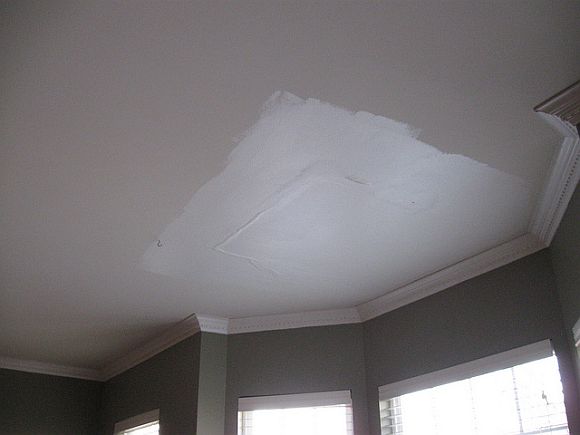
If you have a multi-level house, chances are you’ll encounter the most common type of ceiling issue: drywall damage courtesy of water leaks. This problem has a number of causes, including water from an upstairs bathroom that overflows and leaks into (and through) the ceiling of a lower floor. In less frequent instances, you may also find yourself a victim of interior leaks if ice dams have built up on your roof.
Aside from a sporadic or steady drip of water from your ceiling, you’ll also notice some discoloration and peeling. The first step is to pinpoint the source of the leak and fix it.
After that, you’ll want to repair the ceiling. Because there could still be water inside the ceiling, it’s best to remove the damaged portion. Before you cut into the ceiling, drill a hole in the center of the stained area and drain any standing water that may remain.
Allow ample time for the ceiling to dry, even if that means overnight or a couple of days. Then cut the damaged area from the ceiling and replace it with a new piece of drywall. Nail or glue in the drywall, and if needed, use drywall tape or joint compound to cover any visible drilling holes.
One of the toughest parts of this job is getting the new piece to match the existing ceiling, an especially arduous task if your home features the dreaded popcorn ceiling. If your ceiling is smooth, try a couple coats of paint in a matching hue and see if that does the trick. In the worst case scenario, you’ll have to repaint the entire ceiling so that the patch is completely obscured.
Have you made a similar repair in your home? Let us know how you tackled your ceiling issue.
Photo: Flickr.com/_rockinfree

No Comments